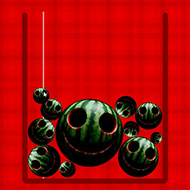
Do Not Grow This Watermelon offers a straightforward idea: combine fruits by dropping them into a container, but avoid reaching the giant watermelon. While it sounds simple, the challenge quickly becomes clear once the container starts filling up. Each decision shapes how long the session lasts, and the smallest mistake can shorten the attempt dramatically. This mix of simple controls with demanding strategy is what gives the puzzle its lasting appeal.
Fruits appear one by one, and players decide where to drop them. Identical fruits merge into bigger ones, creating both opportunities and risks. The further the progression goes, the closer the game gets to the final watermelon stage. The goal is to keep the board manageable for as long as possible, scoring points through steady merges.
Lasting longer in Do Not Grow This Watermelon depends on smart strategies. The game rewards those who carefully observe patterns and anticipate upcoming drops. Proper planning keeps fruits from piling up and allows for smoother chains.
Players often ask if Do Not Grow This Watermelon is winnable. Since it is endless, the objective is simply to last as long as possible. Another frequent question is whether larger fruits are always better. In truth, they bring points but also reduce space, which can be a disadvantage. Some players also wonder if luck dominates the gameplay. While randomness exists, skill in managing merges usually decides the outcome.
In the end, Do Not Grow This Watermelon is about finding balance between building points and maintaining space. Each session feels like a puzzle to be solved differently, keeping players engaged and eager to try again after every attempt.